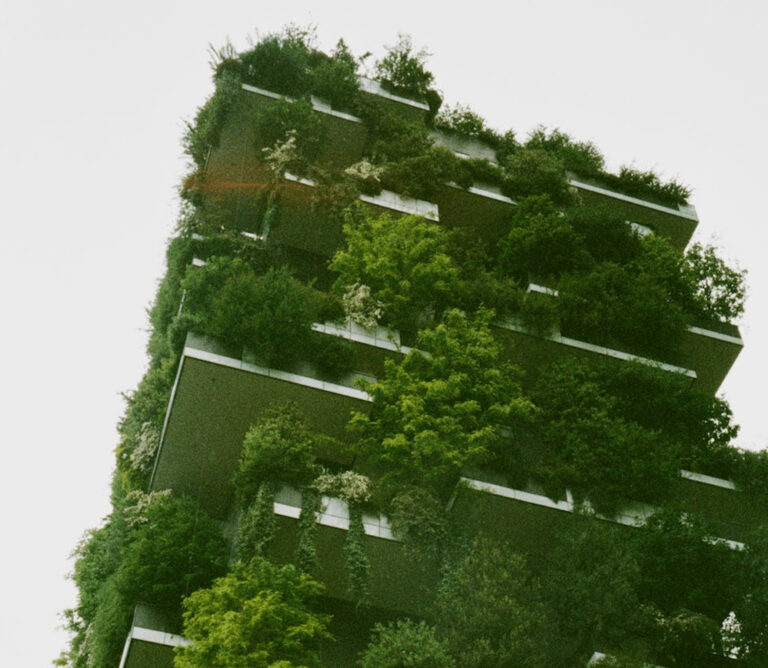Exploring the HR Potential of Green Roofs
HOw to greenify a 'top' workplace for the wellbeing of staff

Green roof are roofs that are partially or completely covered with vegetation planted over a waterproofing membrane. They can provide numerous environmental, economic, and social benefits. And because they are becoming more of a theme in the discussion about asking employees return to the concrete jungles that are our modern cities, today we’ll take a look at the advantages of green roofs and how facility operators, architects and even HR managers can design them to create cooler, more livable work places.
Environmental, Social and Economic Benefits
Green roofs, also known as eco-roofs or living roofs, come in two main types: extensive and intensive. Extensive green roofs are typically shallow, ranging from 2 to 6 inches deep. They are planted with low-growing, drought-tolerant plants like sedums, mosses, and herbs. These roofs require minimal maintenance and irrigation due to their shallow soil depth, making them a popular choice for many urban settings.
On the other hand, intensive green roofs have a deeper soil layer, allowing for a wider variety of plants, including shrubs, trees, and even vegetable gardens. While they offer more flexibility in plant selection, intensive green roofs require regular maintenance, including irrigation, fertilization, and care.
But if good care is given, green roofs can act as natural sponges, absorbing and storing rainwater to help reduce runoff and the risk of flooding. Additionally, green roofs also help mitigate the urban heat island effect by providing shade and evaporative cooling, even in spaces normally less visited by staff. They can also filter pollutants and carbon dioxide from the air to a limited degree, contributing to improved air quality and reduced city air pollution overall.
From an economic standpoint, green roofs can provide additional insulation, reducing heating and cooling costs for buildings and extending the lifespan of the roof membrane by protecting it from UV radiation and temperature fluctuations. They can also enhance the value of properties by improving aesthetics and energy efficiency if designed well.
One key benefit is the habitats they provide for birds, insects, and other wildlife, increasing biodiversity in urban areas. Additionally, by absorbing traffic noise, a well designed green roof, if build on a flat roof structure, can create islands of peace for staff.
Design Factors
When considering the design and installation of a green roof, one should consider correct waterproofing, drainage, and plant selection, since the selected plants need to thrive in the limited soil depth under direct sunlight and wind exposure. For extensive green roofs, which are shallower and low-maintenance, sedums are a popular choice. These hardy plants come in various colors and can withstand challenging conditions. Mosses are another good option for covering bare spots and require little maintenance while retaining moisture.
Herbs like thyme, oregano, and lavender are also well-suited for extensive green roofs–and not just for their drought tolerance: they are also great pollinator attractors. For intensive green roofs with deeper soil, succulents like Sempervivum and Echeveria are popular choices. Perennials like yarrow, daylilies, and black-eyed susans can also thrive in the deeper soil of intensive green roofs and provide seasonal blooms. They add color and texture to rooftop gardens, changing with the seasons and offering visual interest year-round.
When it comes to planting, use lightweight, well-draining soil specifically designed for green roofs. This type of soil reduces the load on the roof structure and ensures good drainage to prevent waterlogging. Dig holes slightly larger than the root balls of your plants and space them according to their mature size. Plant the plants at the same depth as they were in their containers, ensuring that the soil level is slightly below the edge of the planting hole to prevent water runoff. After planting, water the plants thoroughly to help them establish their roots.
Maintenance is also an ongoing aspect of caring for your green roof. Use slow-release or organic fertilizers to provide nutrients to the plants without causing excessive growth. Regular pruning and trimming help maintain the shape of the plants and prevent overgrowth. Keep an eye out for weeds and remove them promptly to prevent them from competing with the plants for nutrients and space.
If you are interested in learning more about biophilic design in the urban space more generally, we offer training you can book here. The course run by biophilia expert Rita Thrombin is designed to help boost staff moral, retention and corporate identity, and is an excellent skillset to have for any modern HR professional.
